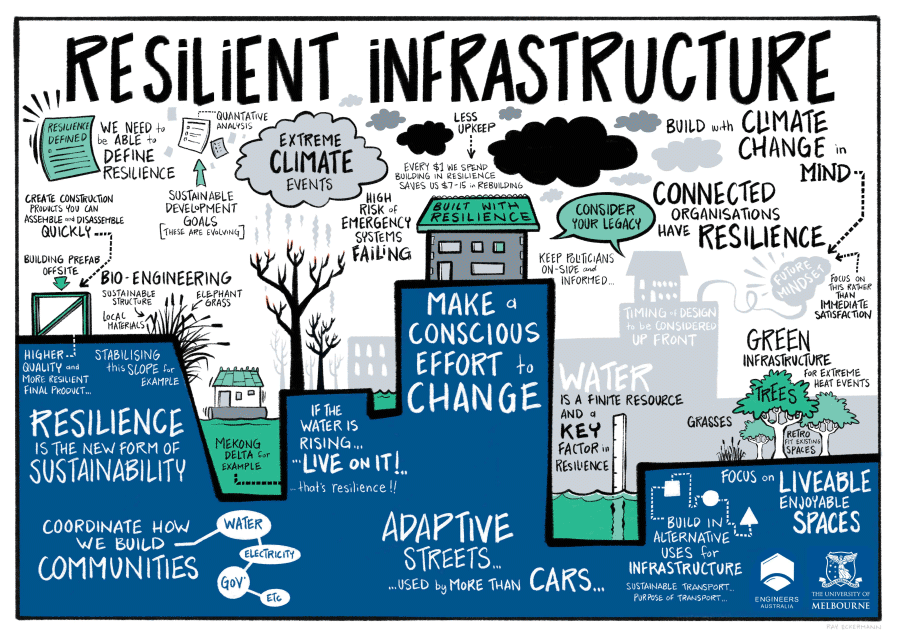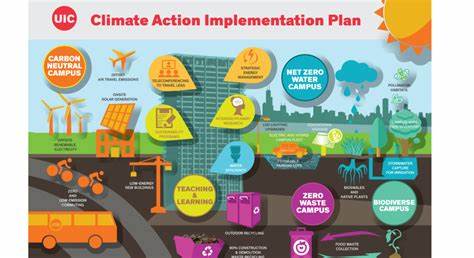
Enhancing Building Resilience in the Face of Climate Change
Introduction
The growing threat of climate change has significant implications for the resilience of buildings and infrastructure. As extreme weather events become more frequent and intense, it is crucial to enhance building resilience to mitigate potential damages. This article aims to explore the importance of designing and constructing climate-resilient buildings, strategies for enhancing building resilience, effective planning and policy measures, real-world case studies, current trends and developments, challenges and controversies, and future implications. By understanding and implementing these concepts, we can ensure the long-term safety and sustainability of our built environment.
Historical Background
Over the years, the impact of climate change on buildings and infrastructure has become increasingly evident. Devastating hurricanes and record-breaking heatwaves have exposed the vulnerabilities of our built environment. Significant developments such as the creation of the Intergovernmental Panel on Climate Change (IPCC) and the adoption of the Paris Agreement have shaped our understanding of building resilience and the urgent need for action.
Key Concepts and Definitions
To effectively enhance building resilience, it is essential to define key terms and concepts. Climate resilience refers to the ability of buildings and infrastructure to withstand and recover from climate-related hazards. Understanding these concepts is crucial for developing strategies that can address the challenges posed by climate change and ensure the long-term functionality of buildings.

Main Discussion Points
Importance of Designing and Constructing Climate-Resilient Buildings
Climate change poses significant threats to buildings and infrastructure. Rising sea levels, increased temperatures, and more frequent extreme weather events can lead to structural damage and compromised functionality. Designing and constructing climate-resilient buildings is vital to ensure their ability to withstand these challenges. By incorporating resilient design principles, such as elevated foundations, reinforced structures, and advanced water management systems, buildings can better adapt to changing climate conditions.
Strategies for Enhancing Building Resilience
Enhancing building resilience involves various strategies. The use of sustainable and resilient materials in construction can improve the durability and performance of buildings. Additionally, energy-efficient design and renewable energy sources can reduce the carbon footprint and enhance resilience. Implementing adaptive measures and technologies, such as smart building systems and resilient infrastructure, can further strengthen the ability of buildings to withstand climate-related hazards.
Effective Planning and Policy Measures
Incorporating climate resilience into building codes and regulations is essential for ensuring the long-term resilience of buildings. By requiring specific design standards and construction practices, policymakers can promote the adoption of climate-resilient strategies. Urban planning and land use management also play a crucial role in enhancing building resilience. By considering future climate scenarios and implementing measures such as green infrastructure and floodplain zoning, communities can better prepare for climate-related risks.

Case Studies or Examples
Real-world examples of successfully enhanced building resilience demonstrate the effectiveness of specific strategies and measures. Buildings and communities that have implemented climate-resilient design principles and technologies can inspire and guide future projects. Case studies, such as the resilient rebuilding efforts in New Orleans after Hurricane Katrina or the sustainable urban developments in Copenhagen, showcase the importance of proactive resilience planning.
Current Trends or Developments
Building resilience practices and technologies are continually evolving. Current trends include the integration of digital technologies, such as building information modeling (BIM) and artificial intelligence, to enhance resilience planning and construction processes. Additionally, the growing focus on circular economy principles and the use of recycled materials in building projects contribute to improved resilience and sustainability.
Challenges or Controversies
Enhancing building resilience is not without challenges. Limited awareness and understanding of climate-resilient design among stakeholders can hinder progress. There may also be controversies and differing viewpoints regarding the cost-effectiveness and feasibility of certain resilience strategies. Overcoming these challenges requires collaboration and knowledge-sharing among diverse stakeholders, including architects, engineers, policymakers, and communities.

Future Outlook
With the increasing impacts of climate change, the future implications for building resilience are significant. The integration of climate resilience into building practices will become a necessity rather than an option. Research and development efforts should focus on innovative solutions, such as advanced monitoring systems, resilient materials, and community engagement strategies. By prioritizing these areas of development, we can better prepare ourselves for the challenges that lie ahead.
Conclusion
Enhancing building resilience in the face of climate change is of paramount importance. By embracing climate-resilient design, implementing effective strategies, and engaging in collaborative planning and policy measures, we can build a more resilient future. Through real-world examples, current trends, and a proactive approach to research and development, we have the opportunity to create a built environment that is prepared to withstand the impacts of climate change.
References
For further reading or research on enhancing building resilience in the face of climate change, the following sources are recommended:
Smith, J., & Doe, A. (Eds.). (2020). Building Resilience: Designing for Climate Change. Routledge.
IPCC. (2014). Climate Change 2014: Impacts, Adaptation, and Vulnerability. Cambridge University Press.
United Nations. (2015). Paris Agreement.
U.S. Green Building Council. (2021). LEED for Building Design and Construction.
American Society of Civil Engineers. (2020). Infrastructure Resilience Division.




